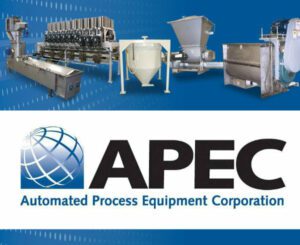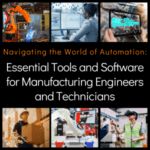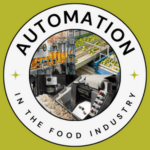How to Fit New Equipment into an Existing System
We’re pleased to share this guest post from APEC, a processing equipment manufacturer, who wants to give you some food for thought about fitting newly designed equipment into an existing system.


Eventually, however, the time will come when newly designed equipment will need to replace broken or inefficient equipment. At that time, there must be consideration made for the existing system you already have in place and how the new component will fit into it without causing issues or disruption.
Here are a few questions to ask before trying to fit new equipment into your existing system.
Do I Really Need It?
Before you go through the process of replacing or upgrading equipment, ask yourself if you really need it. If a component broke, can it be repaired cost effectively? Is buying a used or rebuilt component an option?
When replacing a piece of equipment is the best option for your situation, is it a good idea to replace it with an exact match? Is it a better idea to make an upgrade with new technology or a newer design, allowing your company the opportunity to better compete in your market?
Sometimes, a simple repair or replacement is all you need. Even so, this may be an opportune time for you to upgrade your equipment to meet speed, safety, and profit goals.
Will It Integrate into Our Batch Control System?
Most batch control systems are built to work within restrictive boundaries, making it expensive and difficult to make any changes or upgrades in equipment. However, some batch control systems offer easy adjustments in current programs to accommodate future changes.
Check your system to be sure it allows for new equipment. If it doesn’t, you will need to either replace your equipment with an exact replica, or you can consider upgrading your batch control system at the same time to allow for future changes.
Does It Offer Hygienic Compatibility?
When introducing new equipment into your system, hygienic compatibility must be retained, especially when processing food. “Construction materials used for equipment must be completely compatible with the product, environment, cleaning and sanitizing chemicals, and the methods of cleaning and sanitation,” according to the AMI Equipment Design Task Force (EDTF). It is also helpful if the cleaning and sanitation protocol for the new equipment is compatible with already-established practices in your plant.
Ask the following questions:
- Is equipment that holds liquid or food products adjacent to an uncleanable electrical box?
- Is the equipment designed to minimize product buildup and moisture?
- Can all contact points between separate components be hermetically sealed?
- Is there easy access to every surface and contact point without having to partially disassemble it for cleaning?
- Are there any niches or gaps where product or liquid can collect?
How Will It Increase Worker Safety?
The safety of employees should always be at the top of the priority list when it comes to automated processing equipment. Some of the ways newly designed equipment can ensure safety are through enhanced ingredient automation, machine guards, automatic turn-offs, respiratory filters, and lower sound decibel levels.
At any time, but especially after new equipment has been implemented into your system, consider requesting a free safety and health consultation provided by OSHA (Occupational Safety and Health Administration). The consultant will do a walk-through and study of your plant, review their findings with you, send you a detailed written report explaining their findings, and offer resources to help you reach important safety goals.
When the above items are taken into consideration before purchasing new automated processing equipment, your company will enjoy a smooth transition and attain an increase in productivity.
About the Author:
This guest post is written by Terry Stemler. Terry is the President of APEC and one of three founding partners. He is involved in the design, sales, and implementation of both batch and continuous blending processes for the pet food, food, animal feed, and powder and bulk solids industries for 27 years. He has written and continues to write articles for various trade magazines and textbooks related to liquid coating and optimizing of batch processes. Mr. Stemler is also a speaker and educator for various trade groups and colleges. Before founding APEC, he was a Systems Engineer and was responsible for the design and implementation of prototype industrial and consumer electronic products. He has a degree in computer science from MATC.




